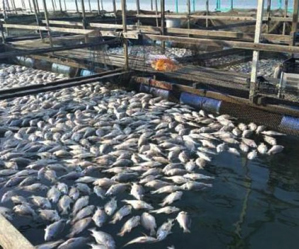Water Quality- The Key to Successful Fish Farming
Fish Farming has been the fastest-growing food production sector over the past 20 years and the global trade in fish and fishery products has seen record growth over the past seven years. Countries such as the US, Japan, France and Spain are the consumption leaders and sales are forecast to hit $150bn in 2018, an increase of 7% over 2017.
Read also: Fertilizing fish pond: when and why you fertilize fish pond
Fish farming is expected to continue growing at a rate of 5% per year over the next decade. Businesses ranging from Marine Harvest, the largest salmon producer in the world, to overnight pop-up companies operating in small warehouses and basements are supplying the demand.
While growth at this rate can generate exceptional profits, it can also bring many problems. As with land animals, when fish farms become crowded, this makes it very easy for diseases to spread. Viral infections are particularly dangerous, since fish that survive their infections can become carriers and transmit viruses to non-infected fish, even if they present no symptoms.
In addition, fish are often given food that makes them grow faster but can cause health problems. Lipid visceral degeneration is a condition from which many fish suffer and is a result of being fed products such as other fish and crustaceans with a high density of fat and carbohydrates.
 Learn More
Learn MoreRead also: Monitoring pond water quality to improve Production
Whether a facility is using a Recirculation Aquaculture System (RAS) or flow-through system, the introduction of contaminants must be controlled. A good supply of water, adequate in both quantity and quality, is essential to a successful fish farming operation. Ground water obtained from deep wells or springs is the best source of water for fish culture. Generally, it is free of pollutants and has relatively high hardness levels, which are beneficial under some circumstances. Municipal water supplies also can be used after chlorine, fluoride and other chemicals are removed.
Other sources of water – particularly surface water from streams, rivers, ponds and lakes – are not recommended for fish culture. Surface water may contain fish diseases, parasites, pesticides and other pollutants that can kill or slow the growth of fish. Testing the quantity and quality of the available water supply is one of the first steps a prospective fish farmer should take.
Ensuring water quality parameters are achieved typically requires the use of filtration, ozone or UV disinfection, or some combination of the three. While ozone has traditionally been used within this application, it has come under intense scrutiny due to the high level of technical training required to operate it correctly and its unforgiving nature in the event of an overdose or failure. With several high-profile ozone system failures that have resulted in mass aquaculture deaths, filtration and UV are becoming more commonplace solutions.
Read also: Solutions to fish farming problems in Nigeria
One of the biggest advantages of UV systems is that they have no byproduct formation and leave no residual in the water. This ensures that fish remain protected and are not subjected to harmful chemicals. UV plays a vital role in destroying bacteria, viruses, protozoans, cysts, spores, unwanted algae and other microorganisms. Also, when coupled with filtration, UV can provide a robust solution from flows as low as a few gallons per minute all the way up to 12 or 15 million gallons per day.
By: Dan Shaver
For more information and updates join our WhatsApp group HERE
Like our page on Facebook HERE











